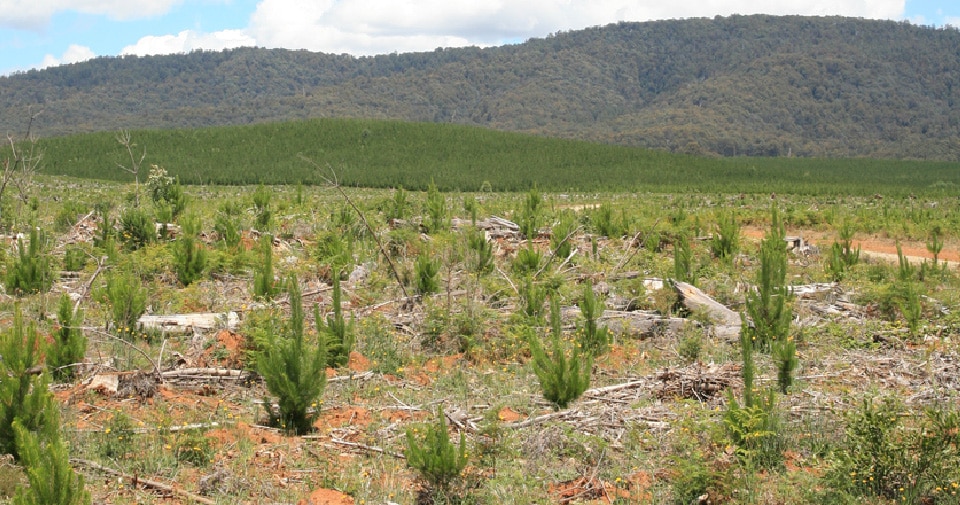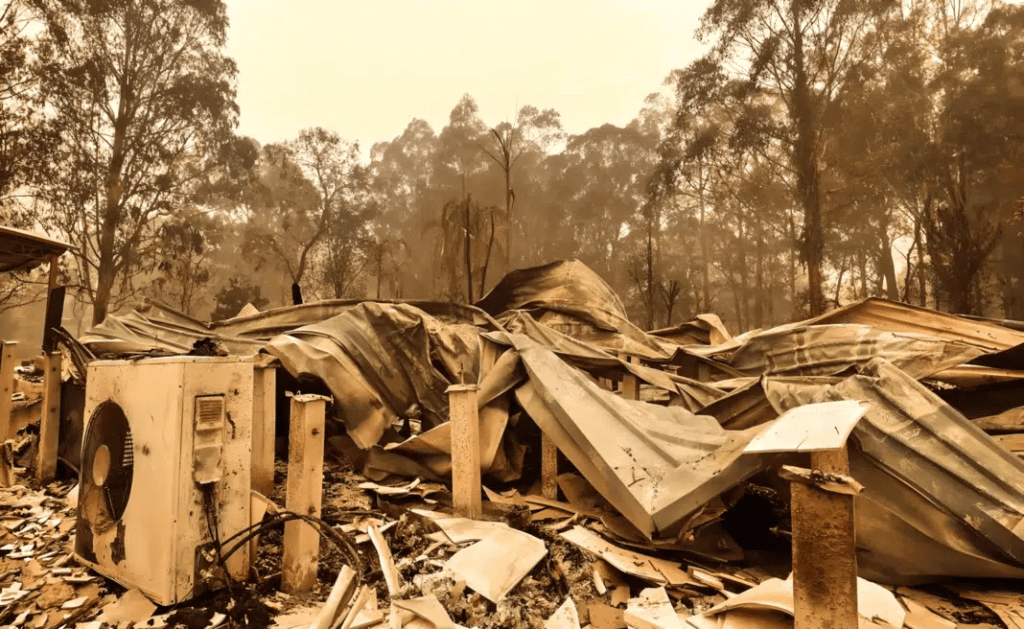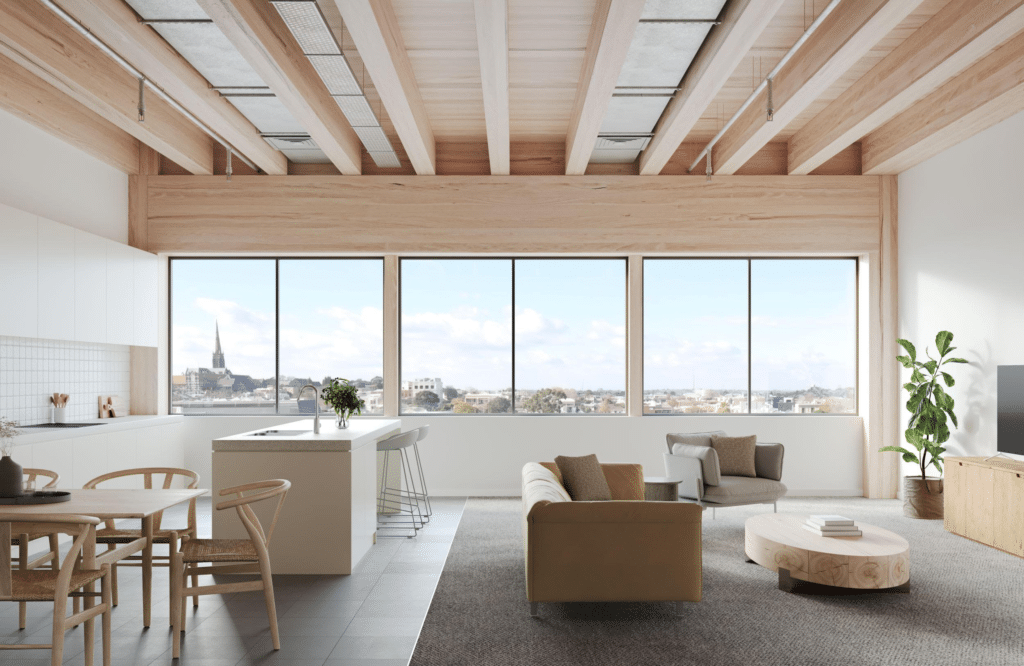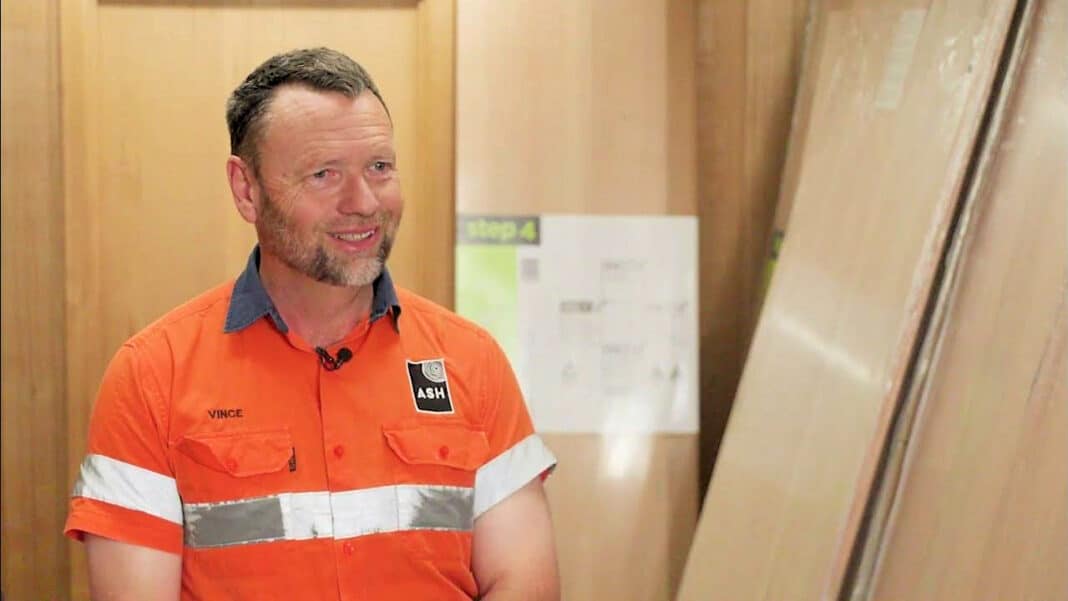Australia’s largest hardwood timber manufacturer is accelerating production, now importing thirty or more 40-foot containers of American hardwoods monthly to compensate for locked-up Victorian hardwoods.
Known as “Glacial Oak”, the new American Oak (Q. rubra) is ASH’s solution to the Victorian native forest ban; instantly recognisable with its consistency and blond colouring, it is “the best solution for the vast majority of businesses in the ASH supply chain.”
That is according to Vince Hurley, the Managing Director of Australian Sustainable Hardwoods (ASH), who spoke to Phillip Hopkins from the Gippsland Times yesterday.
The pivot to North America comes as the Victorian industry grapples with the ban on native forest harvesting – enforceable from January 1st, with the Heyfield-based ASH once reliant on harvested Victorian species to produce 520 cubic metres of timber a day.
And whilst reductions in hardwood supply started to hit supply chains in November last year, ASH’s supply of Victorian-grown Victorian Ash, Messmate, Silvertop Ash, Stringybark, and Wormy Chestnut has been shrinking for years.
That process began in 2017 when ASH lost half of its Vic Ash volume, and by last year, just 3% of its supply came from Victorian forests. This dwindling supply, a sort of “death by a thousand cuts”, prompted a major strategic rethink and private by ASH executives. The result was a new strategy with a focus on three key areas:
- Look after the company’s people
- Diversify the fibre input
- Have a greater emphasis on advanced manufacturing and tighten the supply chain to the end user.
But, he said, making a start was difficult, “we had no relationships in the US,” Mr Hurley told Phillip Hopkins, and “these could not be developed overnight,” with ASH working hard to establish its first ties with the US in 2019.
Closer to home, it also targeted greater use of plantation hardwoods in the Stzelecki Ranges – the site of Victoria’s largest investment in new plantations – managed by HVP, Victoria’s largest plantation forest manager.

“As it happens, we developed markets and products and a good supply of the US hardwood,” he said before adding that the decision to turbo-charge the US supply chain made the best business sense.
Victorian Decision Made: Now, ‘Let’s go!’
Once former Premier Andrews decided in May that local harvesting would cease, everything was in place – Glacial Oak, the produce out of the plantations; but “we just had to bump them up to cover what we were missing,” Mr Hurley said.
“Out of necessity, we put ourselves in a good position. With the closure announcement and the closure of Victorian hardwood supply, we have been able to ramp it up.”
Now, trucks from the Port of Melbourne laden with “Glacial Oak” are arriving at the ASH Heyfield facilities multiple times a day, symbolising the changing face of hardwood processing in Victoria – with Australian ports bursting with imports.
“We unload; we have an 85-tonne container forklift. We got it when we were exporting a lot; now we are importing a lot,” Mr Hurley said.
In the lead-up to the Victorian (and WA) ban, Wood Central revealed that Brazil was filling the void in the hardwood supply.

However, for ASH, who looked at Brazil as a potential solution, Glacial Oak provided the ideal solution for its customers, given concerns about low-diameter timbers and fire safety risks.
“We are using it (Glacial Oak),” Mr Hurley said, “to supply the market we have developed and as a replacement for some of our Vic Ash as well.”
“It has been perfect in that space – staircases, windows, doors and furniture. We also have a new engineered flooring line; we will have an engineered floor made of it.”
ASH has been busy building its mass timber capacity
Launched six years ago, MASSLAM is a range of Australian-grown glue laminate timber systems, including hardwood (or softwood) beams, columns, floors and roof structures.
Under the direction of Dave Gover, ex-CEO of the Engineered Wood Products Association of Australasia and current General Manager of ASH, the company is busy adding a third mass timber CNC machine to meet booming demand in the residential and commercial construction markets.
According to Mr Hurley, the engineered floor must match the ASH staircase.
“Home builds, interior designers involved – they want to match the stair with the floor, and now we have an exact match,” Mr Hurley said.
“We are not importing something and re-selling it; we are importing raw product, manufacturing it in Australia as a finished product – not a sawn board, but as finished products.”
These included stair treads, stringers, stair rises, window styles, window sashes, door moulds, furniture components, kitchen bench tops, and tabletops.
“It’s a balancing act. Our solution is to ensure we have a good growing company with access to a long-term (RW, PEFC and FSC) certified sustainable timber supply,” Mr Hurley said.
“These are private forests, but they are grown as forests. That’s their business; they want it to be there forever. There are weekly auctions for wood – it’s a massive industry.”
Victoria’s Housing Crisis Solution: Introducing “Plantation Oak”
Among ASH’s most exciting projects is a new shining gum product called “Plantation Oak”, – which could provide the Victorian government with a much-needed lifeline to solve the housing crisis.
For more than a decade, ASH has been working on developing the product, grown locally in HVP forest plantations, with Mr Gover telling Wood Central’s Senior Editor Jim Bowden that “It is about finding valuable applications for a significant plantation hardwood resource.”
And, according to Mr Hurley, that application could involve social and affordable housing – one of the worst in Australia, with Tenants Victoria only being able to reach out to 30% of dislodged residents who need support.
“We have developed a social housing solution that meets Victorian government objectives – somewhere nice to live, not a concrete box; it has to be energy efficient, carbon positive, not concrete and steel but timber – carbon positive as it stores carbon.”
Wood Central understands that the solution is highly cost-effective to build, maintain and live in. “Importantly, we can construct these very quickly; they can go up three-to-four times faster than a concrete building. It’s a social housing solution,” Mr Hurley said.
The housing can be four to five storeys with a clear open plan that can be turned into individual rooms if needed.

Using Advanced Timber Composite – a new hybrid, mass timber flooring system developed by ASH, services can run between the beams, effectively satisfying acoustic vibration and fire solutions in one go.
According to Mr Hurley, this “is very cost-effective, and you can see timber, unlike other solutions.”
Glacial Oak: Certified, mixed and selectively harvested
Mr Hurley stressed that all American Oak used in Glacial Oak comes from mixed hardwood forests selectively harvested.
“There is no clear-fall,” he said, “It’s a great way of doing it.”
“They go through once every 25 years, taking effectively less than a quarter and gradually going through. They leave old trees; they stay there; they do not burn.”
Known as “selective harvesting,” paying greater scrutiny to pourability and traceability meant that ASH paid more for the timber than if the wood was from a clear-felled coupe.
“You’re effectively paying for social licence to ensure you look after everything in the forest.”
- For more information about Wood Central’s exclusive interview with General Manager Dave Gover, visit Wood Central’s story from May 2023.






